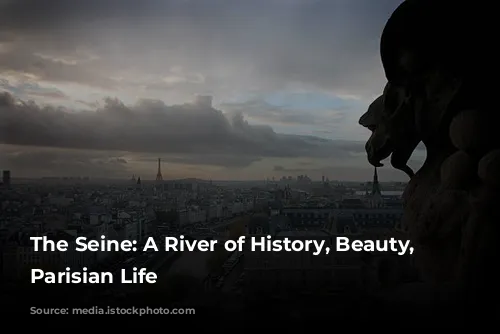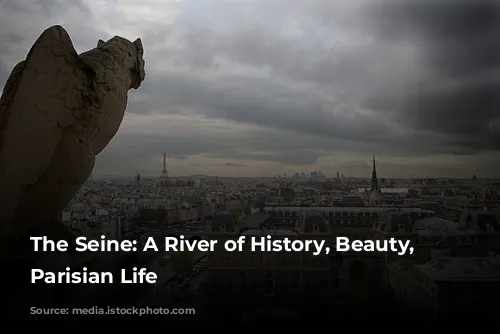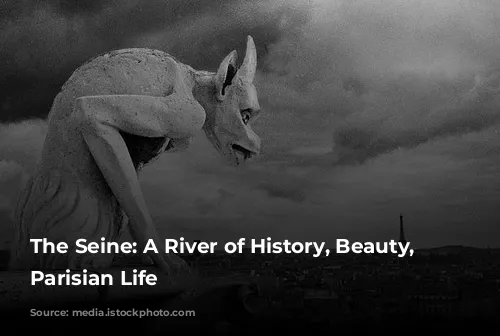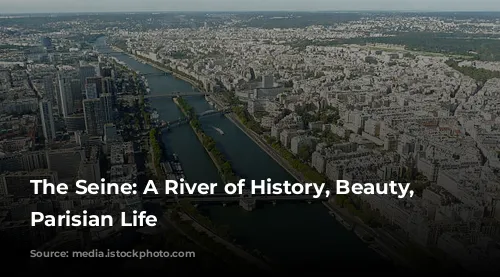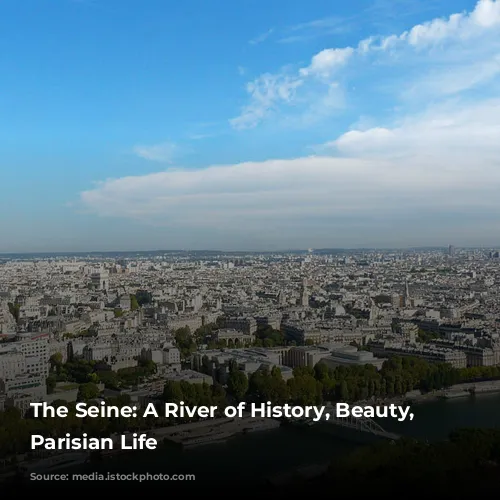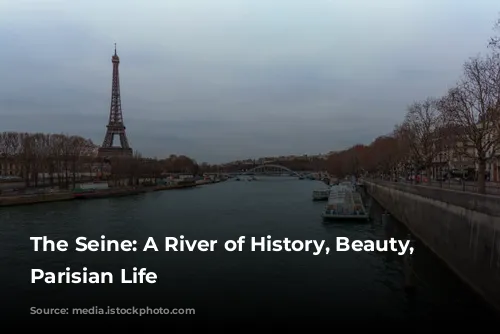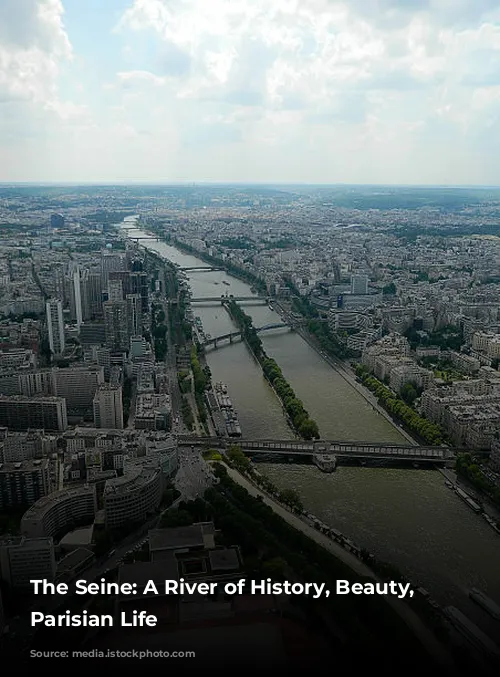Imagine Paris without the Seine. Unthinkable, right? This iconic river, a symbol of the city’s charm and history, flows through the heart of France’s capital. But its story begins far from the bustling streets, in a quiet corner of the countryside.
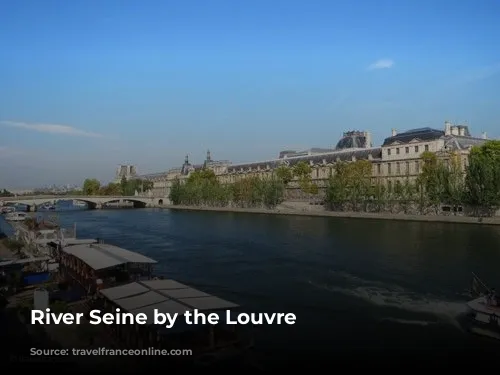
The Seine’s Humble Beginnings
The Seine’s journey starts at Source-Seine, nestled in the Plateau of Langres, high in the Bourgogne-Franche-Comté region. This serene spot, at an altitude of 446 meters, marks the river’s birth.
A grotto, built in 1865, shelters a statue of Sequana, a Celtic deity believed to reside in the river’s source. The statue, a graceful young woman standing on a boat, is a replica of a reclining figure by François Jouffroy.
Traces of a Roman temple, once located near the spring, are waiting to be unearthed. The archaeological museum in Dijon holds a fascinating collection of offerings and votives found in the area, offering a glimpse into the region’s rich past.

The Seine: A Parisian Lifeline
The Seine cuts through the City of Lights from east to west, flowing for 13 kilometers. It’s a vital artery, providing transportation, recreation, and even a unique perspective on Parisian life.
37 bridges, including 4 footbridges, span the river, inspiring poets and songwriters to capture the romance of Paris in their works. Songs like “Sous le Pont Mirabeau” and “Sous les Ponts de Paris” evoke the magic of the Seine.
The river’s history stretches back to the Neolithic era, attracting settlements and serving as a crucial transportation route. Ancient barges discovered in the Parc de Bercy, now displayed in the Carnavalet Museum, are a testament to the Seine’s enduring role in Paris’ development.
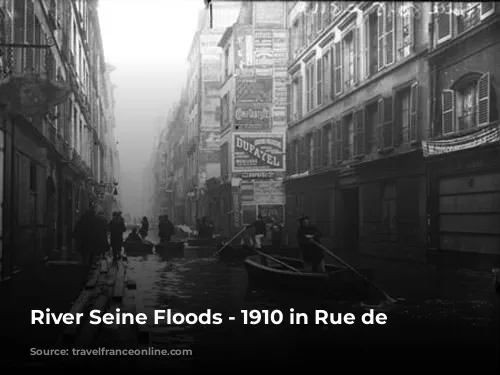
The Nautes Parisiens: Masters of the Seine
The story of the Corporation of the Boatmen of Paris, the Nautes Parisiens, is intricately woven into the history of the river. These skilled navigators, descendants of the Celtic tribe Parisii, settled on the Ile de la Cité, strategically positioned at the crossing of the Seine and ancient north-south routes.
The Nautes Parisiens expanded their maritime activities after the Roman conquest, becoming a powerful force in the city. They erected monuments like the impressive Pillar of the Boatmen, now housed in the Cluny Museum.
During the Middle Ages, the corporation flourished through river trade, playing a key role in shaping Paris’ early administrative structures. Their coat of arms, featuring a boat sailing on the Seine, eventually became the official emblem of the city.
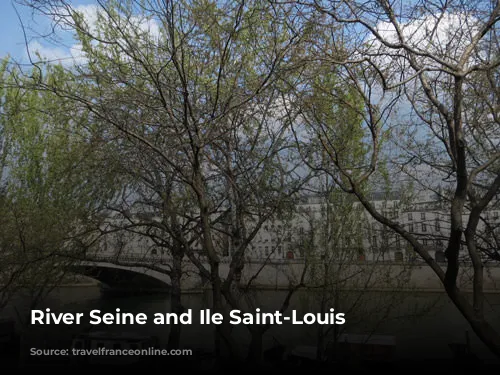
The Seine’s Impact on Parisian Life
The Seine has been an indispensable source of water for Parisians throughout history. In 1608, the Samaritaine water pump was installed beneath the Pont-Neuf, supplying the Louvre with water until 1813. However, medieval Paris lacked modern infrastructure, and access to running water was limited. People collected water from the river or purchased it from street vendors.
To improve water access, Napoleon commissioned the construction of the Canal St Martin and Bassin de La Villette in the early 19th century. These projects aimed to supply water to public fountains across the city.
Beyond practicality, the Seine offered Parisians a natural playground. They strolled along its banks, swam in its waters, and enjoyed the river’s refreshing embrace.
While swimming in the Seine was officially banned in 1923, the tradition of riverside recreation continues with the annual Paris Plages event. During the summer, locals and visitors can relax and unwind on the Seine’s banks, embracing the city’s charm.
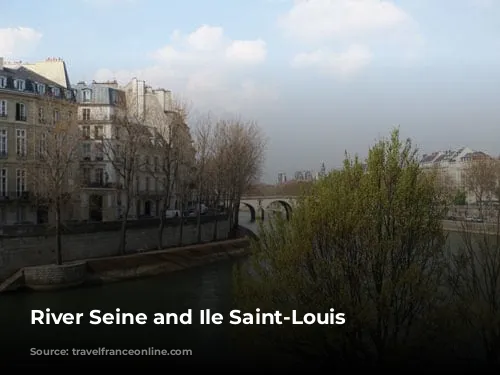
The River’s Unpredictable Nature
The Seine, once wild and unpredictable, was known for its changing character. In harsh winters, it would freeze over, allowing people to walk across its icy surface. But as spring arrived, massive ice blocks would break free, causing damage to bridges and flooding nearby areas.
Throughout history, the Seine has experienced numerous floods, some more devastating than others. The flood of 1280 destroyed the Grand-Pont, while the flood of 1296 submerged all of Paris’ bridges, which were lined with houses at the time.
One of the most memorable floods occurred in 1910, lasting for nine days and causing the water level to rise by 9.50 meters. This extraordinary event serves as a reminder of the Seine’s powerful force.
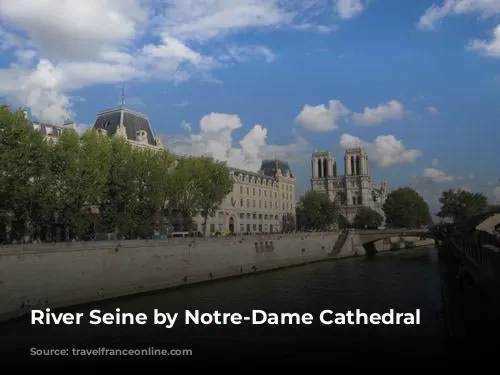
Shaping Paris, Shaping History
The Seine has had a profound impact on Paris’ landscape, shaping and reshaping the city over centuries. Islands and islets emerged from its waters, contributing to the city’s expansion and development. Some islands, like those near Ile de la Cité, were joined to expand existing landmasses, while others, like Ile Louviers, were connected to the right bank to create new areas, such as Quartier Morland.
Further downstream, the imposing Ile aux Cygnes, an 890-meter-long embankment built in 1827, played a crucial role in supporting the construction of three Parisian bridges. Originally named Ile Maquerelle, this island was later attached to the Rive Gauche, adding to the city’s intricate tapestry.
Natural processes also left their mark on the Seine, altering its course and the surrounding terrain. One significant change occurred on the Right Bank, where a broad meander developed, eventually leading to the formation of the Marais.
The Marais, once marshland, was drained in the 11th century by the Knights Templar and monks of the Abbaye de St Martin-des-Champs, reclaiming the land for human habitation. These religious institutions were among the first settlements in the area.
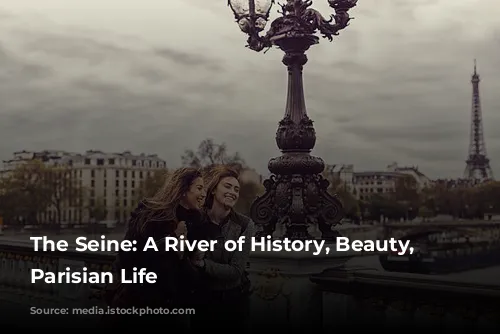
A Modern Parisian Oasis
In recent years, the Seine’s banks and quays have undergone a transformation, becoming pedestrian-friendly havens. Vehicular traffic has been banned on some stretches, creating serene spaces for leisurely walks and relaxation.
As you stroll along the riverbanks, you’ll encounter booksellers (bouquinistes) and inviting benches, perfect for soaking up the Parisian atmosphere. For a unique perspective, consider a leisurely river cruise, allowing you to experience the city’s beauty from a different angle.
The Seine itself has become a destination, attracting visitors seeking a peaceful escape from the city’s buzz. Take a moment to explore its tranquil banks, unwind amidst the serenity, and discover the magic of Paris from a different perspective.
